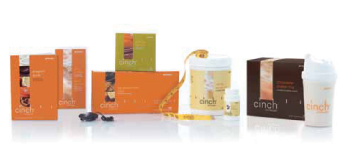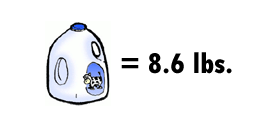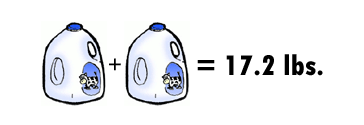November is American Diabetes Month® and we’re asking the question – why should you care about diabetes?
Because it is the leading cause of kidney disease, blindness, and amputations, yet nearly 25% of people who have it don’t even know it. In the United States 24 million people have been diagnosed with diabetes and the American Diabetes Association estimates that there are another 6 million who have the disease but don’t know it. So chances are, you or someone you love have been affected by diabetes in some way. But even if you haven’t been affected by diabetes, you need to know that diabetes is one of the major public health crises of the 21st century, and it continues to grow to epidemic proportions. And a very worrisome concern is that the death rate for diabetes has continued to grow since 1987, whereas the death rates due to heart disease, stroke and cancer have actually declined.
What’s Diabetes?
Diabetes is a disease in which blood glucose levels are elevated because of inadequate insulin production in the pancreas or from insulin resistance in the cells of the body, felt to be caused by obesity and an unhealthy diet. Elevated blood sugar levels are quite damaging to your cells and this can lead to short-term and long-term complications.
There are three types of diabetes – type 1, type 2 and gestational diabetes. Type 1 diabetes, formerly called juvenile diabetes or insulin-dependent diabetes is usually first diagnosed in children, teenagers, or young adults. In this form of diabetes, felt to be caused by an autoimmune response that essentially destroys the beta cells of the pancreas so that they no longer produce insulin, daily insulin administration is a lifelong reality. Treatment also includes a healthy diet, close monitoring of carbohydrate intake, calorie control and regular exercise to minimize complications.
Type 2 diabetes, formerly called adult-onset or non-insulin-dependent diabetes, is the most common form of diabetes. Approximately 90% of all people with diabetes have type 2 diabetes. People can develop type 2 diabetes at any age, even during childhood. This form of diabetes usually begins with insulin resistance, a condition in which cells in fat, muscle and liver tissue do not use insulin properly. At first, the pancreas keeps up with the added demand by producing more insulin. Over time, however, the pancreas can no longer secrete enough insulin and blood sugars begin to rise. People who are overweight and inactive are FAR more likely to develop type 2 diabetes. Treatment includes a healthy diet, weight loss, exercise and ultimately the need for diabetes medications if people are not successful with weight loss and calorie control.
Gestational diabetes is an all too common complication of pregnancy, usually developing in women who have an excessive weight gain during pregnancy. Although this type of diabetes usually goes away after childbirth, these women are at risk for developing type 2 diabetes later in life.
Serious and Life Threatening Complications
Whether you have type 1 or type 2 diabetes, it is absolutely essential that you eat healthfully and control your calorie intake to keep your weight in a healthy range. Over the course of years, people who continually have elevated blood glucose levels because they don’t control their calorie intake will develop damage to blood vessels and nerves, increasing the risk for a number of serious, even life-threatening complications such as:
- Heart disease and stroke – Adults with diabetes have heart disease death rates about 2 to 4 times higher than adults without diabetes.
- Blindness – Diabetic retinopathy causes 12,000 to 24,000 new cases of blindness each year making diabetes the leading cause of blindness in adults.
- Kidney disease – Diabetes is the leading cause of kidney failure.
- Amputations – More than 60% of non-traumatic lower-limb amputations occur in people with diabetes.
What about Pre-diabetes?
Maybe you don’t have diabetes, but you or someone you know may have pre-diabetes, a condition in which blood glucose levels are higher than normal but not high enough to be classified as diabetes. Pre-diabetes is estimated to affect as many as 57 million Americans, putting them at risk to develop type 2 diabetes, heart disease and stroke. Being overweight and physically inactive are contributing factors to both diabetes and pre-diabetes. In fact, about 80-90% of people with type 2 diabetes or pre-diabetes are overweight to obese.
Prevention is Key
Developing pre-diabetes or diabetes is not inevitable. Studies have shown that people at risk for diabetes who lose weight and increase their physical activity level can prevent or delay diabetes and even return their blood sugar levels to normal. In the Diabetes Prevention Program, a large prevention study of people at high risk for diabetes, lifestyle interventions (diet and exercise) resulting in modest weight loss of 5-10% of initial body weight reduced the development of diabetes by 58% over a 3 year period. The reduction was even greater (71%) for people over the age of 60!
Get Motivated to Achieve a Healthy Weight
Because most people with diabetes and pre-diabetes are overweight to obese, the Number ONE Strategy for improving blood glucose regulation is achieving a healthy weight. While losing weight isn’t easy, the rewards are great! Losing weight involves changing both your eating and exercise habits: two things that can be hard to do! One way to increase your motivation is to find some inspiration. Ask yourself – do the costs associated with staying at your current weight outweigh the benefits of weight loss? Do you have high cholesterol, osteoarthritis or a family history of heart disease, stroke or cancer? These health conditions are directly linked to being overweight and studies have shown modest weight loss can prevent or delay these conditions. Does being overweight prevent you from accomplishing what you want to do in life? Losing weight will ultimately help you feel and look better and increase your energy level so you can do more of the things you enjoy.
Taking Action
Once you’re ready to take action, look for a weight management program designed to promote a safe rate of weight loss while helping to preserve your lean muscle mass. Lean muscle is metabolically active tissue—which means it burns more calories than non-muscle tissue! If you don’t follow a safe, nutritionally sound weight loss program, chances are you’ll lose some of your muscle which will lower your metabolism—which means you burn less calories and it is more difficult to lose weight. To help prevent lean muscle loss, get plenty of high quality protein and leucine in your diet. Leucine is an essential amino acid that helps preserve lean muscle mass and stimulates muscle protein synthesis. During periods of calorie reduction, adequate amounts of leucine as part of an overall diet with a healthy balance of protein, carbohydrate and fat help preserve lean muscle mass, so you can lose weight from fat.
Look for a program that also promotes:
- Meal replacement beverages or bars packed with protein and fiber. Meal replacement shakes and bars are a convenient way to control calories. Boosting your intake of high quality protein and fiber at meal times also helps control hunger and promotes satiety. Adequate amounts of dietary soluble fiber can also help lower cholesterol and blood sugar.
- Low glycemic index food choices. The glycemic index is a measure used to rate how fast and how high carbohydrate containing foods raise blood sugar levels. Foods with a glycemic index of 55 or lower are considered “low glycemic” and are generally foods rich in complex carbohydrates (i.e. whole grains), have moderate amounts of lean protein, heart healthy fats and plenty of fiber. Eating a diet with a low glycemic index helps keep blood sugar levels steady, preventing those fluctuations in blood sugar that can lead to feelings of low energy and food cravings.
- Boosts in physical activity. Increasing your level of physical activity not only increases calories burned in a day, it also improves insulin sensitivity – your body’s ability to use insulin to transport glucose from the blood into the cells of the body. Work towards getting 30 to 60 minutes a day of exercise most days of the week. Brisk walking is a great way to start and work in some light weight training which not only burns calories but stimulates muscle protein synthesis.
- Minerals and botanicals that help regulate blood sugar. Although achieving a healthy weight is the first step in retaining normal blood sugar levels, ensuring adequate intake of essential nutrients and botanicals may also help support blood sugar regulation. For example, the essential trace mineral chromium is needed for normal insulin function. Magnesium is also necessary for normal glucose metabolism by affecting both normal insulin secretion and responsiveness to insulin. Zinc is necessary for normal production, storage and secretion of insulin and vanadium is also involved in normal insulin function. Colosolic acid, an active component of the botanical banaba leaf extract may also help support normal blood sugar regulation.
- Support tools and education. Successful weight management involves not only permanent lifestyle changes to your eating and exercising habits but ongoing education and understanding about all the factors that influence your weight. Look for a program that provides you support tools (e.g., pedometer, tape measure, diet and exercise journals and/or computer software) to help track your success. Online, interactive websites are also another great tool to connect, share and problem solve with others working towards achieving a healthy weight.
Be well!
Dr. Jamie McManus MD, FAAFP Chairman, Medical Affairs, Health Sciences and Education
ARE YOU AT RISK?
To find out if you or someone you know is at risk for pre-diabetes or diabetes, visit the American Diabetes Association website at: www.diabetes.org and take the risk test.
Diabetes is more common in African Americans, Latinos, Native Americans, Asian Americans and Pacific Islanders. If you are a member of one of these ethnic groups, paying special attention to this test is important.








